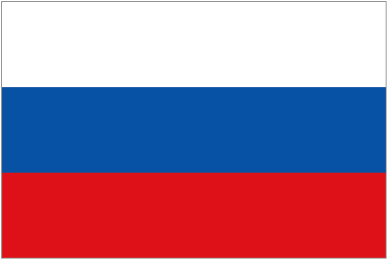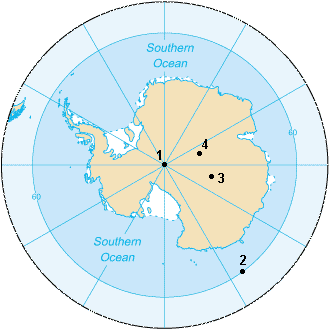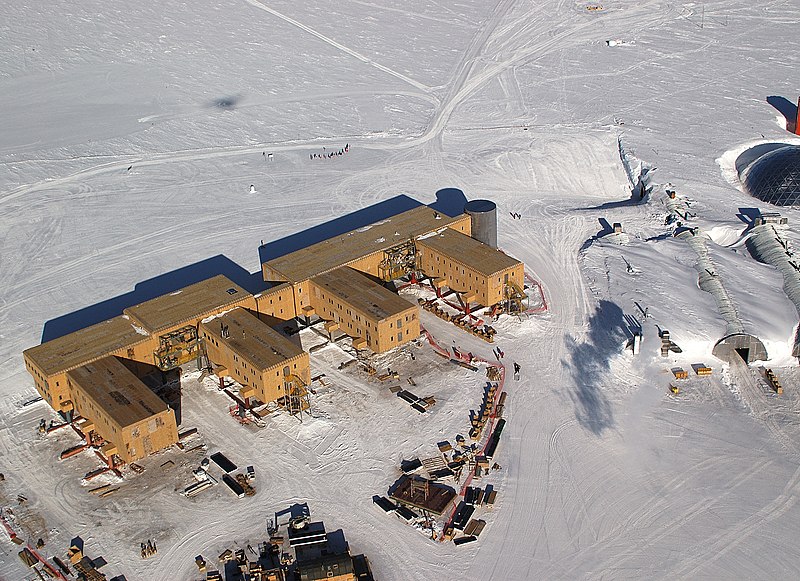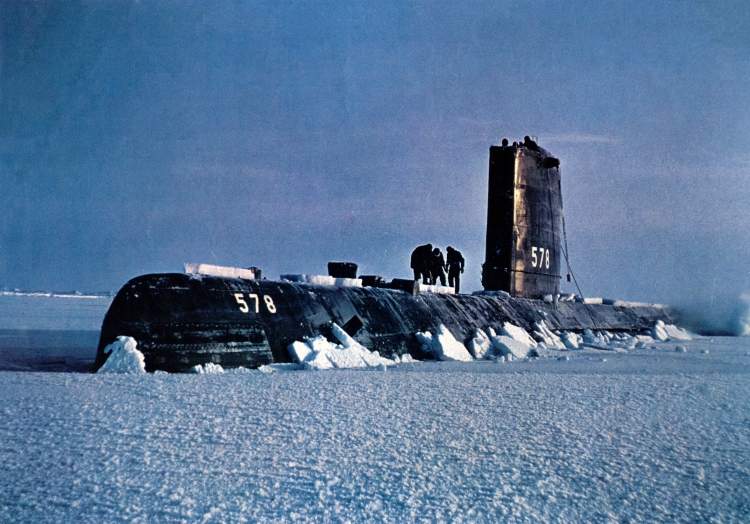
|  Date? - Polyus Cholada / Pole of Cold, Verkhoyansk (Russia).
"A monument in Russian for 'Pole of Cold' stands at the entrance to the city of Verkhoyansk.
On the frigid taiga, 3000 miles east of Moscow, deep in the heart of Siberia, sits Verkhoyansk, the oldest city above the Arctic Circle. For more than three centuries, Russians have continuously resided here, braving endless winters on the banks of the Yana River, which is frozen solid for nine months of the year. Today, approximately 1500 people live here.
Verkhoyansk lays claim to the title of coldest city in the world, the so-called Cold Pole. It’s hard to dispute the designation, when you consider that from September to March the city averages fewer than 5 hours of sunlight each day. (In December and January, there is nearly no sunlight.) Winter temperatures there typically fall between minus 60 & minus 40 degrees Fahrenheit. The low, recorded in the late 19th century, was minus 90.
Nowadays, the city is attempting to attract 'extreme tourists,' who are drawn by the intense cold. For much of its history, however, Verkhoyansk was a preferred exile destination, used first by the czars, then later by the Soviets. In the 20th century, Verkoyansk’s population peaked at 2500 residents." Date? - Polyus Cholada / Pole of Cold, Verkhoyansk (Russia).
"A monument in Russian for 'Pole of Cold' stands at the entrance to the city of Verkhoyansk.
On the frigid taiga, 3000 miles east of Moscow, deep in the heart of Siberia, sits Verkhoyansk, the oldest city above the Arctic Circle. For more than three centuries, Russians have continuously resided here, braving endless winters on the banks of the Yana River, which is frozen solid for nine months of the year. Today, approximately 1500 people live here.
Verkhoyansk lays claim to the title of coldest city in the world, the so-called Cold Pole. It’s hard to dispute the designation, when you consider that from September to March the city averages fewer than 5 hours of sunlight each day. (In December and January, there is nearly no sunlight.) Winter temperatures there typically fall between minus 60 & minus 40 degrees Fahrenheit. The low, recorded in the late 19th century, was minus 90.
Nowadays, the city is attempting to attract 'extreme tourists,' who are drawn by the intense cold. For much of its history, however, Verkhoyansk was a preferred exile destination, used first by the czars, then later by the Soviets. In the 20th century, Verkoyansk’s population peaked at 2500 residents." |















